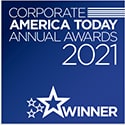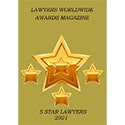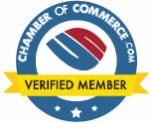In a recent case decided by the Court of Chancery of Delaware, California Safe Soil, LLC (“CSS”) filed a lawsuit against KDC Agribusiness, LLC (“KDC”) and its officers—Hal, Matthew, Justin, and Barry Kamine (“Individual Defendants”)—alleging trade secret misappropriation, tortious interference with a contract, conspiracy, unjust enrichment, and fraud. The claims revolved around CSS’s innovative process for recycling food waste into a nutrient-rich byproduct, which could be used to create environmentally friendly fertilizers and animal feed. CSS sought to protect this process as a trade secret. The law of trade secrets including trade secret misappropriation frequently is an issue in disputes regarding franchise, dealer agreements and license agreements in general.
On December 11, 2015, CSS entered into a License Agreement with KDC, granting KDC a nonexclusive license to use the CSS Process under specific terms. The agreement required milestone payments tied to facility development and running royalties on product sales. KDC was also provided the option for exclusivity if certain financial obligations were met. KDC sought to leverage the CSS Process to construct a large-scale facility in Pennsylvania, aiming to expand production. However, disagreements arose when KDC stopped making the required payments under the agreement, resulting in CSS terminating the license. Despite this, KDC continued to utilize the CSS Process without authorization and did not pay royalties, prompting CSS to initiate legal action.
Legal Issues
The central legal issue before the court was whether the CSS process qualified as a trade secret under both federal and Delaware law and, if so, whether KDC and its officers had misappropriated the process.
Under both the federal Defend Trade Secrets Act and the Delaware Uniform Trade Secrets a trade secret was defined as “information, including a formula, pattern, compilation, program, device, method, technique or process that derives independent economic value, actual or potential, from not being generally known to, and not being readily ascertainable by proper means by, other persons who can obtain economic value from its disclosure or use, and is the subject of efforts that are reasonable under the circumstances to maintain its secrecy.”
After proving trade secrecy, the trade secret plaintiff (CSS here) also must prove by a preponderance of the evidence, meaning the evidence must show that something is more likely than not, that the trade secret has been disclosed or used without authorization.
Analysis
The court carefully examined whether CSS had successfully proven its entire process as a combination or compilation trade secret.
The court first examined the economic value of the CSS process, noting that it derives value if a competitor cannot replicate it without significant time and money investment. The fact that KDC agreed to pay a substantial amount for access to the CSS process was significant evidence of its independent economic value and the inability of competitors to replicate it without incurring significant costs. The Individual Defendants were unable to provide a satisfactory explanation as to why KDC would agree to such terms if the process could be easily reproduced. This indicated the inherent value of the CSS process. Moreover, while some components of the process might not have been secret, the court emphasized that the entirety of the CSS process, which was developed over a span of fifteen years, provided a unique methodology that maintained the nutritional value of food waste. The extensive research and development undertaken by CSS and its predecessors further demonstrated the independent economic value of the process as a whole.
Next, the court evaluated whether the CSS process was generally known or readily ascertainable. Trade secret law establishes that if a method or process can be easily found in public literature or through public means, it fails to qualify as a trade secret. Expert testimony from Dr. Keener was pivotal in demonstrating that, although certain components of CSS’s process were public, no public information, including CSS patents, provided a comprehensive guide for replicating the process. Dr. Keener highlighted that CSS’s unique combination of steps and techniques formed a process that could not be assembled into a viable business model without access to CSS’s proprietary knowledge. The court referenced Merck & Co., Inc. v. Smithkline Beecham Pharmaceuticals Co., which held that the mere presence of aspects of a trade secret in publications does not undermine its protection if access to the complete methodology remains restricted. This analysis effectively dismissed the defendants’ argument that the CSS process was readily ascertainable from publicly available information, as Delaware case law strongly rejects such defenses in trade secret misappropriation claims. Ultimately, the court concluded that the CSS process was not generally known or easily discoverable, further supporting its trade secret status.
The court next examined whether CSS demonstrated that it took reasonable efforts to maintain the secrecy of its process. The court found that CSS required its employees to sign Non-Disclosure Agreements (NDAs) that generally extended beyond their employment period. Physical records were kept locked, and digital data was protected with passwords. CSS entered into approximately 200 NDAs with third parties before sharing information about its trade secret. It was rare for CSS to share information without an NDA; when it did, it relied on verbal assurances of confidentiality. CSS routinely marked its information as confidential. Disclosures without NDAs were primarily for economic investment purposes, acknowledging that some potential investors, particularly venture capital firms, would not sign NDAs due to their exposure to numerous ideas and potential legal risks. Even though some disclosures occurred without Non-Disclosure Agreements (NDAs), particularly with venture capital firms and potential investors, CSS disclosed certain information to further its economic interests, which did not compromise the secrecy required for trade secrets. The Individual Defendants argued that CSS’s use of time-limited NDAs indicated a lack of reasonable protection for the CSS process. However, these NDAs often involved only partial disclosures and required the destruction of information upon request. The court emphasized that while CSS was not perfect in protecting the process, the standard for protection is reasonableness, not perfection, and CSS’s efforts met this threshold.
Based on these findings, the court concluded that CSS’s process met the definition of a trade secret, which requires information to derive independent economic value from not being generally known or readily ascertainable and to be subject to reasonable efforts to maintain its secrecy.
The court next addressed the misappropriation claim. The court found that CSS successfully demonstrated both the use and unauthorized nature of the use of its trade secret. Initially, KDC was authorized to use the CSS process through a License Agreement that included royalty obligations. However, after obtaining funding for its Fairless Hills facility, KDC terminated the agreement and continued using the CSS process without authorization or payment. This unauthorized use constituted clear misappropriation.
The court also determined that the Individual Defendants were actively participated in misappropriating the CSS process. Hal Kamine, as founder and executive chairman of KDC, oversaw all aspects of the company’s operations, while Matthew and Justin Kamine, as co-CEOs, managed the company alongside Hal. Barry, as chief manufacturing officeer, led the engineering team and was directly involved in the development of the Fairless Hills facility. All four defendants were aware of the bond offering describing the KDC process as based on the CSS Process and the Fairless Hills project as an expansion of CSS’s facilities. Therefore, the court concluded that KDC misappropriate CSS process.
The court then addressed CSS’s common law claims for conspiracy, fraud, and unjust enrichment. These claims were preempted under Delaware law because they were based on the same wrongful conduct as the trade secret misappropriation claims. Similarly, CSS’s tortious interference claim against the Kamines failed, as CSS could not prove that the Kamines acted outside the scope of their employment or against KDC’s interests. Delaware law holds that corporate officers are only personally liable for interfering with a company’s contract if they act beyond their agency authority. The court found no evidence that the Kamines acted with malice or personal motives and concluded that their actions were intended to benefit KDC.
Damages
Regarding damages, the court calculated compensation based on the terms of the License Agreement. It awarded $1,625,502.36 in royalties to CSS, reflecting milestone payments and running royalties tied to product sales. The court rejected CSS’s request for a hypothetical reasonable royalty, deeming it speculative and unsupported by the evidence. While injunctive relief was granted—requiring the return or destruction of CSS’s confidential information and prohibiting future use of the CSS Process—exemplary damages and attorneys’ fees were denied. The court concluded that while KDC’s actions constituted misappropriation, they did not rise to the level of willful or malicious intent necessary for additional punitive measures.
Conclusion Snapshot
The court found in the plaintiff’s favor on its statutory trade secret misappropriation claims. The plaintiff was entitled to $1,625,502.36 compensatory damages, and the defendants were ordered to return or destroy any records containing the plaintiff’s information and were enjoined from using the plaintiff’s process. But the plaintiff was not entitled to exemplary damages or fees.
Afternote
Protecting trade secrets is essential for franchisors and franchisees looking to maintain a competitive edge and achieve long-term success, particularly in industries that depend on unique innovations or proprietary processes. Similar concerns pervade dealer, distribution and license agreements. This case serves as a strong reminder of the importance of taking proactive measures to safeguard intellectual assets from misappropriation. CSS’s success in proving its proprietary process as a combination trade secret highlights the critical need for franchisors to actively manage and protect their confidential information to prevent misuse by competitors. Similarly, franchisees and dealers should be vigilant to identify and keep secret all information or processes that might or could be trade secrets.
The court’s findings underscored the significance of independent economic value as a hallmark of trade secret protection. In CSS’s case, KDC’s willingness to pay substantial sums to access the CSS process—and the defendants’ inability to explain why such payments would be necessary if the process were easily replicable—demonstrated the unique value of CSS’s proprietary methodology. For franchisors, this underscores the importance of clearly defining and showcasing the value their proprietary methods, tools, or processes bring to their business. This includes illustrating how these innovations provide a competitive advantage and why they cannot be easily replaced or duplicated by others.
Another key element examined by the court was whether the CSS process was generally known or readily ascertainable. CSS successfully argued that while some components of its process were public, the unique combination of these components formed a proprietary methodology that was not replicable without access to CSS’s proprietary knowledge. Expert testimony played a crucial role in demonstrating that publicly available information, including CSS’s patents, did not provide a complete blueprint for replicating the process. This finding emphasizes the importance of franchisors not only creating innovative combinations of existing methods or tools but also clearly documenting their proprietary adaptations and explaining why these combinations qualify as trade secrets. This added layer of distinctiveness is critical in proving the uniqueness of intellectual property. The court’s point that information can be found to be a trade secret even if some aspect of it is public should be a warning to franchisees, dealers and distributors.
CSS’s success also hinged on its demonstrable efforts to maintain the confidentiality of its trade secrets. The court commended CSS for implementing robust security measures, including requiring employees and business partners to sign Non-Disclosure Agreements (NDAs), marking sensitive documents as confidential, and securing physical and digital information with strong access controls. These measures sent a clear message about CSS’s commitment to safeguarding its intellectual property. Tailored NDAs for employees, partners, and vendors, combined with effective digital and physical security measures, can create a strong foundation for protecting sensitive information. Importantly, the court emphasized that the legal standard is not perfection but reasonableness. Franchisees and franchisors should focus on implementing practical and consistent security protocols that minimize risks while balancing operational efficiency.
Last, although not discussed in this, case, a related issue regarding trade secrets that arises in many franchise, dealer and distribution termination cases is that franchisees and licensees who choose to operate independently following a franchise or license termination could be accused of having misappropriated the licensor’s or franchisor’s trade secrets. In this regard, federal and state courts many times find a franchisee’s or licensee’s misappropriation of a trade secret as the dispositive factor in ruling against franchisees or licensees in post-term restrictive covenant cases. Moreover, franchisors and licensors in termination litigation attempt to dress up their specific system processes or procedures as ‘protected trade secrets’ even though the information does not qualify legally as such. Accordingly, it is important for licensees, dealers and franchisees at the outset of a license, distribution or franchise agreement to have an attorney identify those aspects of the system that indeed are trade secrets.
































